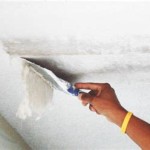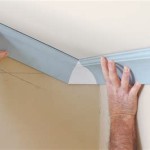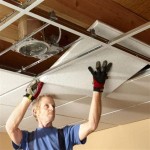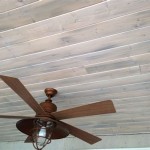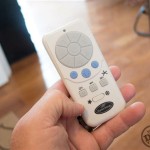How To Remove Ceiling Fan Blades For Cleaning
Ceiling fans are crucial for maintaining comfortable air circulation within a residence. However, their elevated position often causes them to be neglected during routine cleaning schedules. Dust, pollen, and other airborne particulate matter accumulate on the blades, reducing their efficiency and potentially impacting indoor air quality. Regularly cleaning ceiling fan blades, therefore, is essential. A thorough cleaning necessitates removing the blades from the fan motor housing. This article provides a detailed guide on how to safely and effectively remove ceiling fan blades for cleaning, outlining the necessary tools, preparatory steps, and blade removal techniques.
Before commencing any work on electrical appliances, safety should be the paramount concern. Prioritize disconnecting the power supply to the ceiling fan. This can be accomplished by switching off the corresponding circuit breaker in the electrical panel or, alternatively, by disengaging the wall switch controlling the fan. While the wall switch alone might seem adequate, deactivating the circuit breaker provides an added layer of safety, preventing accidental activation of the fan during the cleaning process. Double-checking the fan is indeed powerless before proceeding is a crucial step to prevent electrical shock or injury.
Once the power is completely shut off, assemble the necessary tools and equipment. These typically include a sturdy ladder or step stool, a screwdriver set with appropriate head sizes (usually Phillips head or flathead), a cleaning cloth or towel, a dust mask or respirator, and a container for storing screws. The ladder or step stool should be stable and placed on a level surface to ensure secure access to the fan. The screwdriver selection is important; using the wrong size or type can damage the screw heads, making removal difficult or impossible. The cleaning cloth or towel will protect the surrounding area from dust and debris that fall during the removal process. A dust mask or respirator is recommended to prevent inhalation of dust and allergens stirred up during cleaning. A container, such as a small bowl or plastic bag, will help to keep the screws organized and prevent them from being lost.
With the power off and tools gathered, prepare the work area. Spread a drop cloth or old sheet underneath the ceiling fan to catch any falling dust or debris. This will protect the flooring and simplify cleanup afterward. It is also advisable to examine the ceiling fan closely for any signs of damage or loose parts before beginning disassembly. Note the orientation of the blades and their positions relative to the motor housing. This will serve as a reference point during reassembly, ensuring that the blades are reinstalled correctly and the fan operates balanced.
Understanding Ceiling Fan Blade Attachment Mechanisms
Ceiling fan blades are typically attached to the motor housing using screws. The type and arrangement of these screws can vary depending on the fan's design and manufacturer. The most common attachment method involves screws that pass through the blade and into a mounting bracket or directly into the motor housing. These screws are usually visible and easily accessible. However, some ceiling fans may have more complex attachment systems, such as recessed screws or hidden mounting mechanisms. In such instances, it may be necessary to consult the fan's instruction manual or search for online resources specific to the fan model to determine the proper removal procedure. Attempting to force a blade off without understanding the attachment mechanism can damage the blade, the motor housing, or both.
Before removing any screws, it is helpful to identify the screw type and size. Most ceiling fan blades use Phillips head screws, but some may use flathead or even hex screws. Using the correct screwdriver bit is crucial to avoid stripping the screw head. Stripped screws can be extremely difficult to remove and may require specialized tools or techniques. If a screw head appears to be damaged or corroded, applying a penetrating oil or lubricant may help to loosen it before attempting removal. Allow the lubricant to soak into the threads for a few minutes before trying to turn the screw.
In some cases, decorative covers or trim pieces may conceal the screws that secure the blades to the motor housing. These covers are usually held in place by friction or small clips. Gently pry them off with a flathead screwdriver, being careful not to damage the finish. Once the covers are removed, the screws should be visible and accessible. Take note of the location and orientation of any decorative hardware to ensure proper reinstallation after cleaning. It is also crucial to remember the specific configuration of any washers or spacers that may be present, as these components play a crucial role in maintaining proper blade alignment and balance.
Safe and Effective Blade Removal Techniques
The key to successfully removing ceiling fan blades lies in a systematic and deliberate approach. Starting with one blade, position the ladder or step stool so that it is directly in front of the blade. Ensure that the ladder is stable and secure before climbing. Using the appropriate screwdriver, carefully loosen and remove the screws that attach the blade to the motor housing. Hold the blade securely while removing the last screw to prevent it from falling. Place the removed blade on the prepared drop cloth or sheet to avoid scratching or damaging the surface.
Repeat this process for each remaining blade, working your way around the fan. As each blade is removed, keep the screws organized in the designated container. This will prevent them from being lost and ensure that the correct screws are used during reassembly. It is also helpful to label each blade with a number or letter corresponding to its position on the fan. This will make reassembly much easier and help to maintain the original balance of the fan. Taking pictures of the blade positions before removal can also serve as a useful reference during reinstallation.
If a screw is particularly difficult to remove, avoid using excessive force. Instead, try applying penetrating oil or lubricant to the threads and allowing it to soak for a few minutes. If the screw head is stripped, try using a screw extractor or a rubber band placed between the screwdriver and the screw head to improve grip. As a last resort, consult a professional handyman or electrician for assistance. Forcing a stripped screw can further damage the motor housing and potentially create a more complex repair situation.
Cleaning and Reinstalling the Blades
Once all the blades are removed, they can be thoroughly cleaned. Depending on the level of dust and grime, different cleaning methods may be appropriate. For light dust accumulation, simply wiping the blades with a damp cloth may suffice. For heavier buildup, a mild detergent solution or cleaning spray designed for household surfaces may be necessary. Always follow the manufacturer's instructions when using cleaning products and avoid using abrasive cleaners that could damage the blade finish.
Before reinstalling the blades, ensure that they are completely dry. Moisture can attract dust and promote mold growth. Inspect the blades for any signs of damage, such as cracks or chips. Damaged blades should be replaced to ensure safe and balanced fan operation. Also inspect the mounting brackets and motor housing for any signs of wear or corrosion. Clean these components as well to ensure a clean and secure connection.
Reinstallation is essentially the reverse of the removal process. Align each blade with its corresponding mounting bracket or hole on the motor housing, referring to the labels or photographs taken during disassembly. Insert the screws and tighten them securely, but avoid over-tightening, which could damage the blade or the motor housing. Ensure that all screws are tightened to the same degree to maintain proper balance. After all the blades are reinstalled, visually inspect the fan to ensure that all blades are aligned and properly secured.
Finally, restore the power supply to the ceiling fan by switching the circuit breaker or wall switch back on. Test the fan to ensure that it operates smoothly and quietly. If the fan wobbles or vibrates excessively, it may be necessary to adjust the blade alignment or add balancing weights. Balancing kits are available at most hardware stores and come with instructions for adjusting the blade balance.

How To Clean A Ceiling Fan The Home Depot

How To Remove A Ceiling Fan Hunter

How To Clean A Ceiling Fan

How To Clean A Ceiling Fan The Home Depot

How To Remove Ceiling Fan Blades Clean Maintenance

How To Clean A Ceiling Fan The Home Depot

How To Clean A Greasy Ceiling Fan
.JPG?strip=all)
Ms Nancy S Nook Clean Those Fans

How To Clean A Ceiling Fan The Home Depot

How To Replace Ceiling Fan Blades The Home Depot
Related Posts

